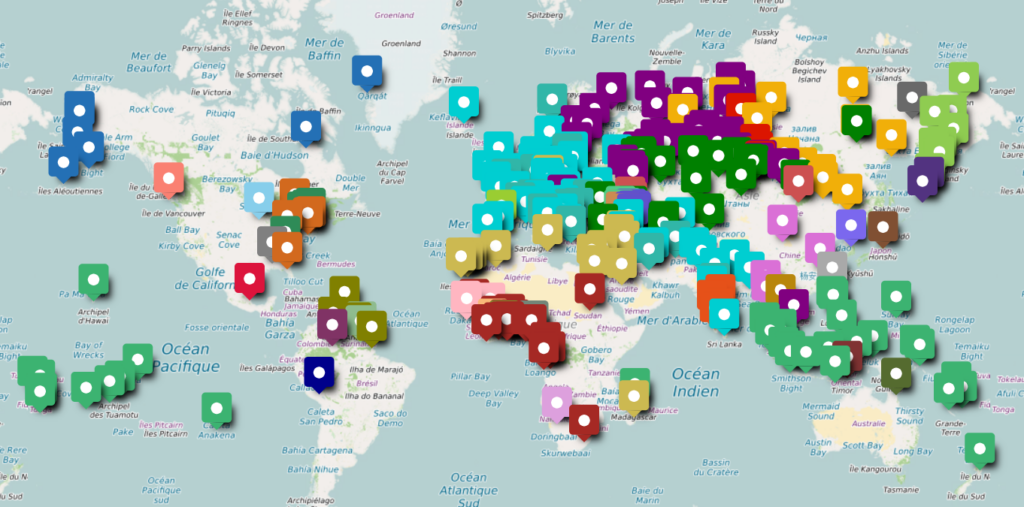Nicoline van der Sijs
An eighteenth-century multilingual Russian dictionary, containing 61,790 words for 296 concepts in 310 languages, belonging to 40 language families
In the 18th century, a ‘cat’ was called man-boesi-boesi in Sranantongo. At least according to the Russian comparative dictionary of all languages and dialects, compiled by the Prussian scholar Peter Simon Pallas at the behest of Russian Empress Catherine the Great. That historical dictionary is now digitized, and can be consulted without knowledge of Russian or the Cyrillic script, thanks to the addition of English translations.
For the dictionary, some 300 terms were translated into as many languages as possible, in order to compare the vocabularies of different languages. Governors of the provinces of the vast Russian empire, Russian diplomats around the world and foreign diplomats in Russia ensured the dissemination and translation of the terms. In 1787 and 1789, Pallas published the results in two volumes. An expanded edition was published in 1790-1791 in four volumes. The Serbian scholar Teodor Janković-Mirijevski, director of the Pedagogical Academy, was responsible for this new edition, titled Сравнительный словарь всѣхъ языковъ и нарѣчiй, по азбучному порядку расположенный, or Comparative dictionary of all languages and dialects in alphabetical order. The map below shows all the languages mentioned in the dictionary. Languages belonging to the same language family are assigned the same color.

Map with the languages mentioned in The Digital Pallas
Few scholars outside Russia are familiar with the dictionary, as it is written in Russian and all the words are rendered in the Cyrillic script, even words from languages that are normally written in Latin, Japanese, Greek, Arabic or Chinese script. But also within Russia the dictionary is largely unknown, as most of the thousand copies of the second edition were immediately stored into the imperial archives. This obscurity is regrettable, as the dictionary contains a wealth of language data, including languages about which very little is known from this period, such as Sorbian (a Slavic language spoken in Germany) or Mansi, related to Finnish and Hungarian, spoken in Western Siberia.
Digitization
A team of researchers digitized all data from the dictionary, as we announced in a previous CIPL newsletter. English translations were added to the concepts and language names, and all words have been provided with a scientific transliteration. For some of the words, the contemporary form has also been added. As a consequence, knowledge of Russian and Cyrillic script is no longer necessary to consult the dictionary. The result is now being launched on the website The Digital Pallas.
The Digital Pallas contains over 61,000 words for 300 terms in 310 different languages. In the About-section on the website, background information on the methods used and on the search options of the website is provided.
Hoax
Some data in the dictionary are taken from dictionaries or earlier glossaries; for instance, the Korean data can be retraced to Noord en Oost Tartaryen, a description of Siberia published in 1690 by Nicolaas Witsen, the Amsterdam mayor and friend of Peter the Great. The eleven numbers that the dictionary includes in the language of Formosa, present-day Taiwan, are also based on an existing publication, namely An Historical and Geographical Description of Formosa by George Psalmanazar from 1704. However, this is a hoax. Psalmanazar claimed to be the first inhabitant of Formosa to visit Europe, but in fact he was born in France and had never been to Formosa. He made up a Formosan alphabet and language for his book, and many scholars fell for this, including Pallas.
Other data Pallas collected during expeditions in Russia, such as on the related languages Kalmyk, Buryat and Mongolian. Communication during such expeditions sometimes proved problematic. For instance, the translation of ‘belt’ into Manchu is an early example of ‘lost in translation’. The informant translated the concept as suwayan jurgan, literally ‘yellow stripe’: presumably the researcher was pointing to his (yellow) belt.
The database contains a wealth of new and interesting data. The current version of the database is work in progress. For instance, we are still adding contemporary forms to the eighteenth-century words. Furthermore, we have designed a WordPress site on which articles, notes and squibs about and based on the Digital Pallas will be published. These articles will concern the cultural-historical context that led to the realization of the dictionary, and in-depth information on the language data and the various language families in the Digital Pallas. There also is a section for discussions, and Questions and Answers.
Please contact co-ordinator Nicoline van der Sijs: post@nicolinevdsijs.nl if you want further information on the project. Interested parties are cordially invited to contribute in any way, for example by writing an article or short note for the WordPress site.

